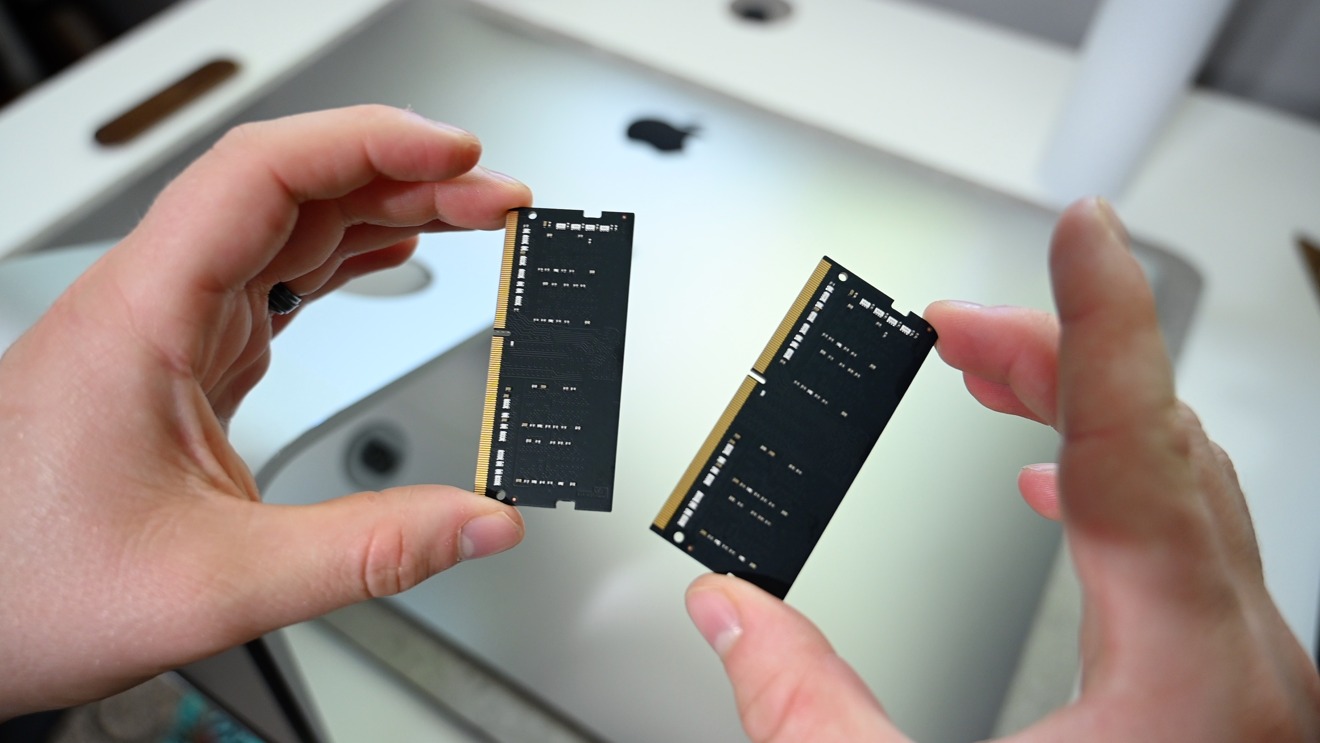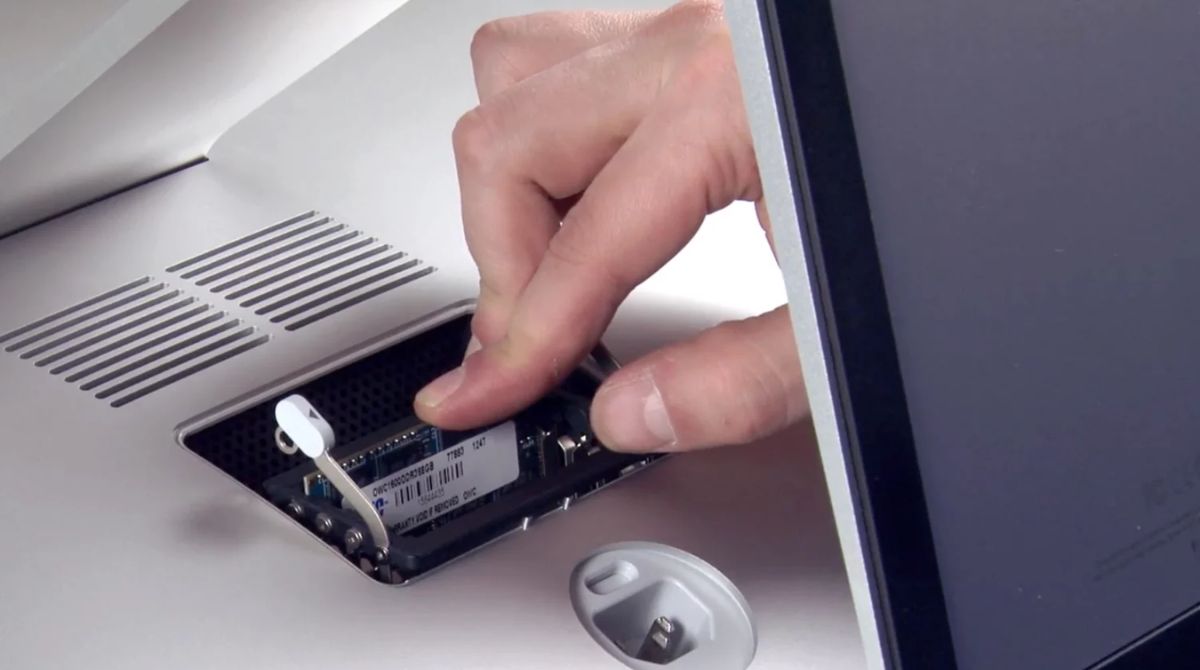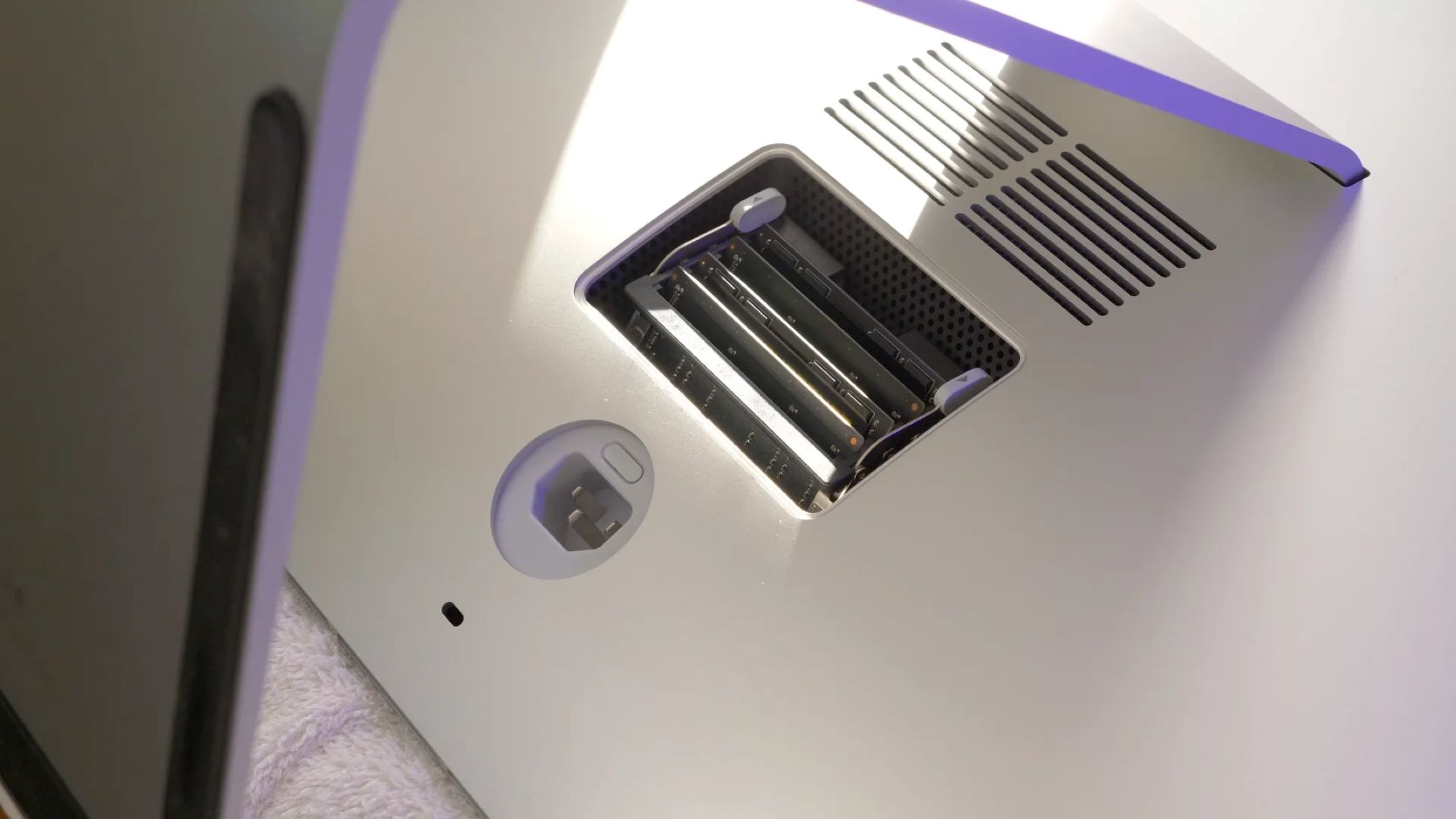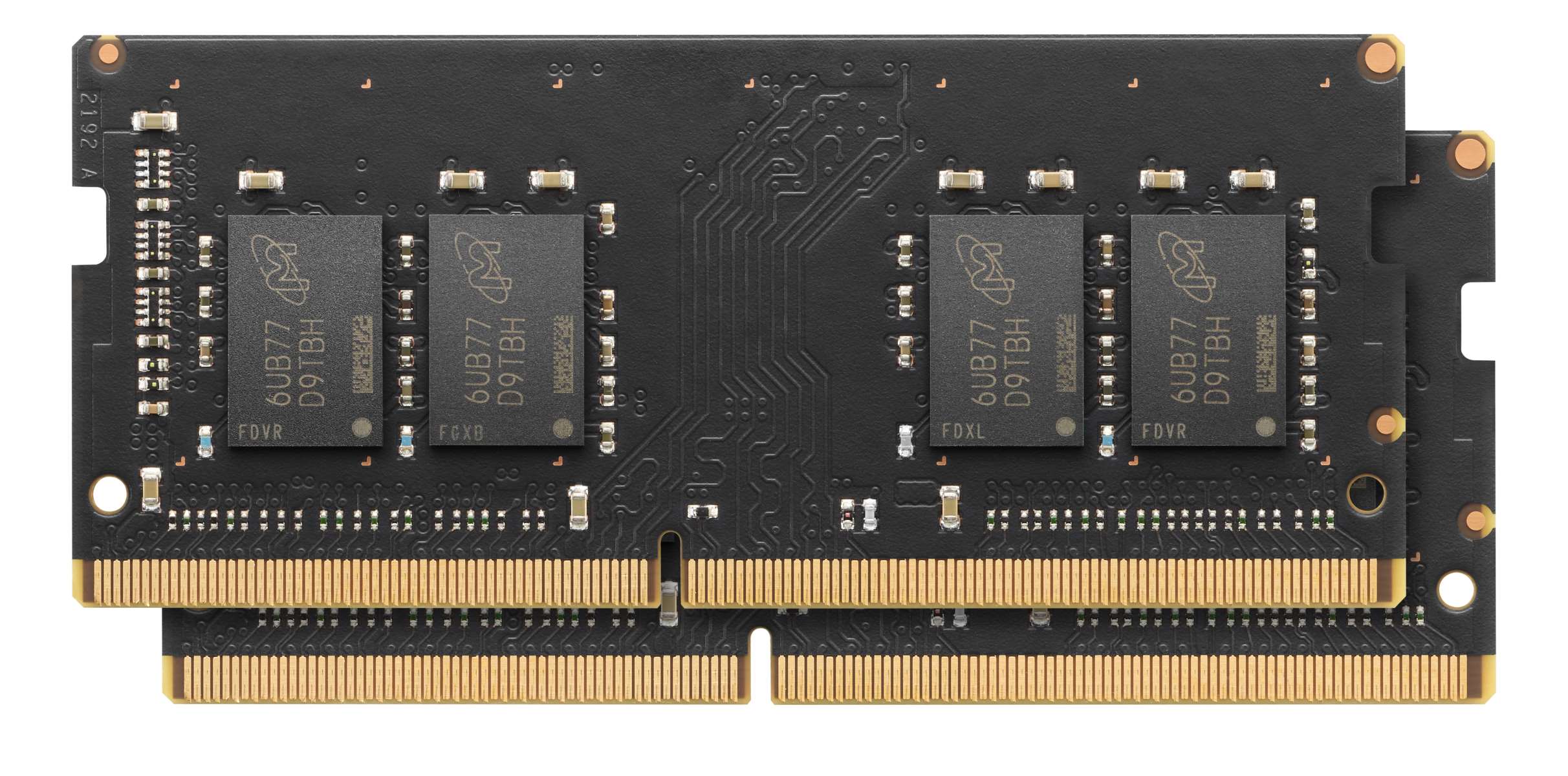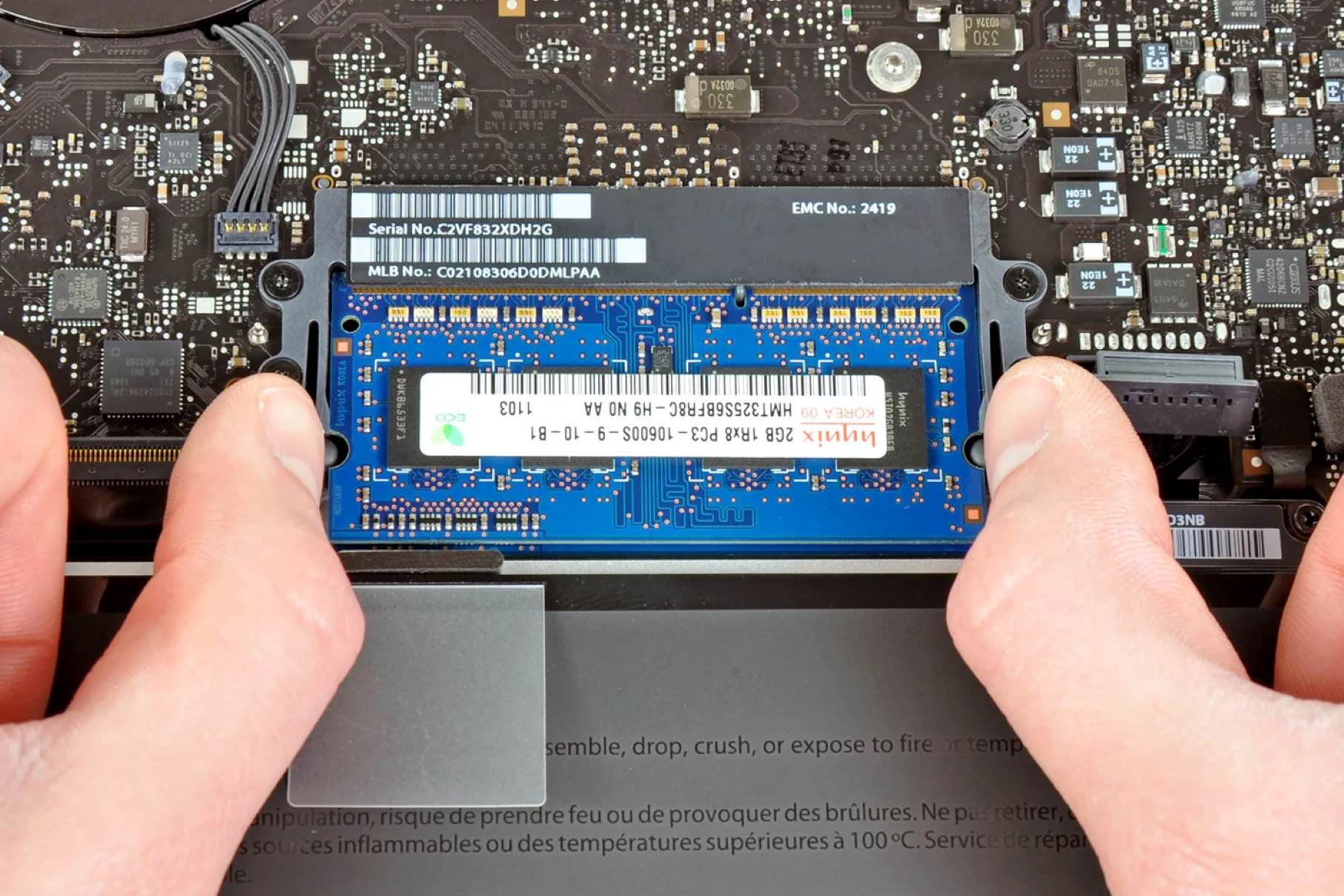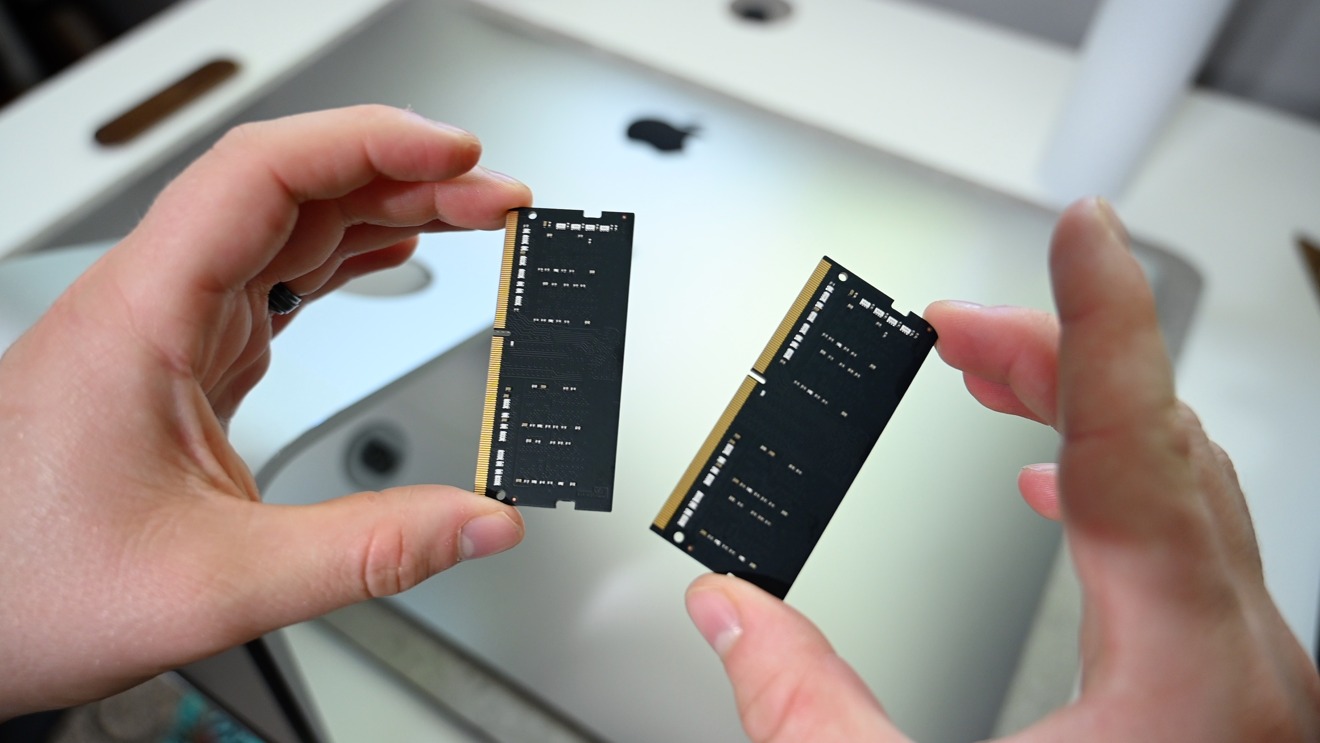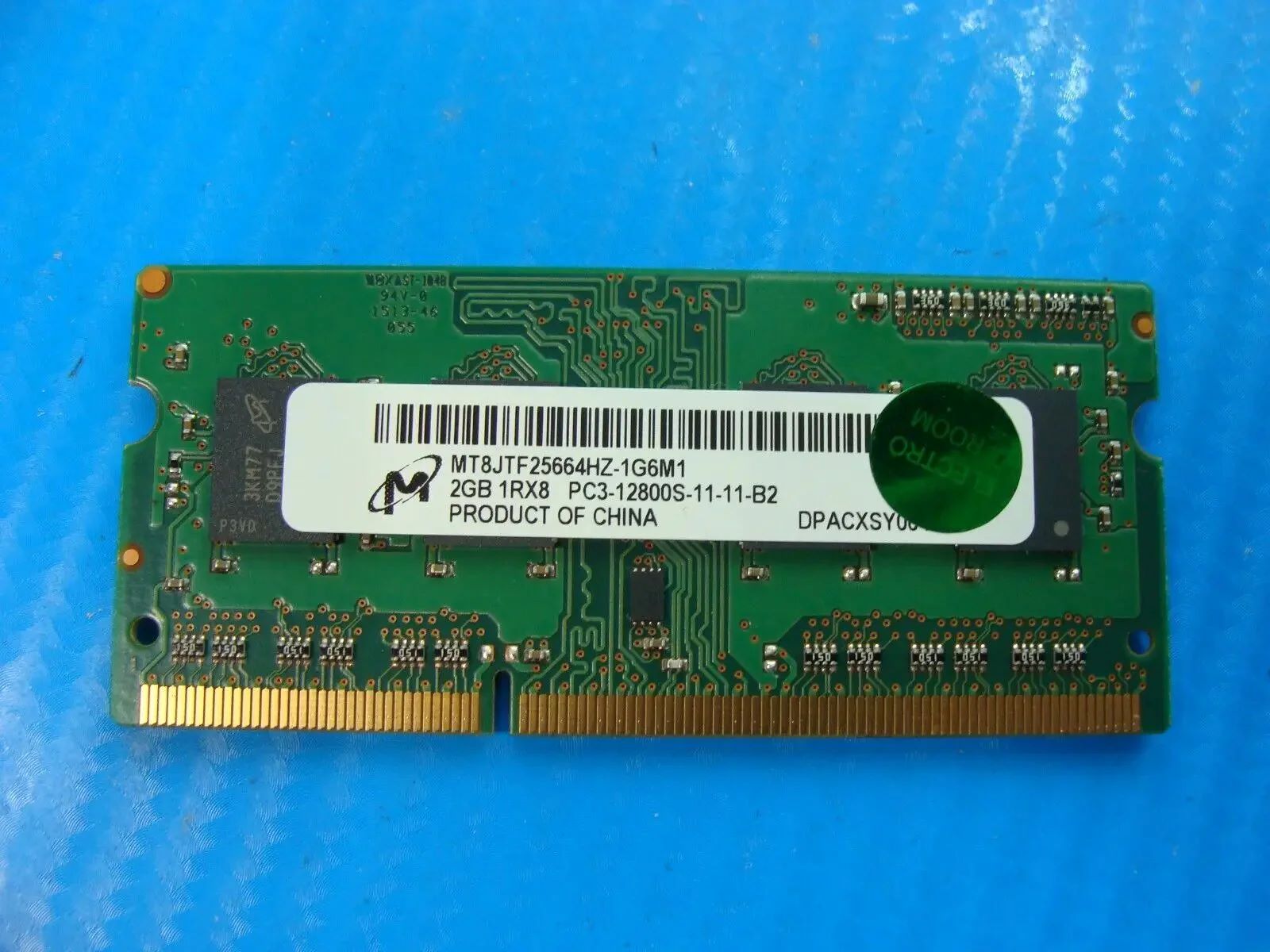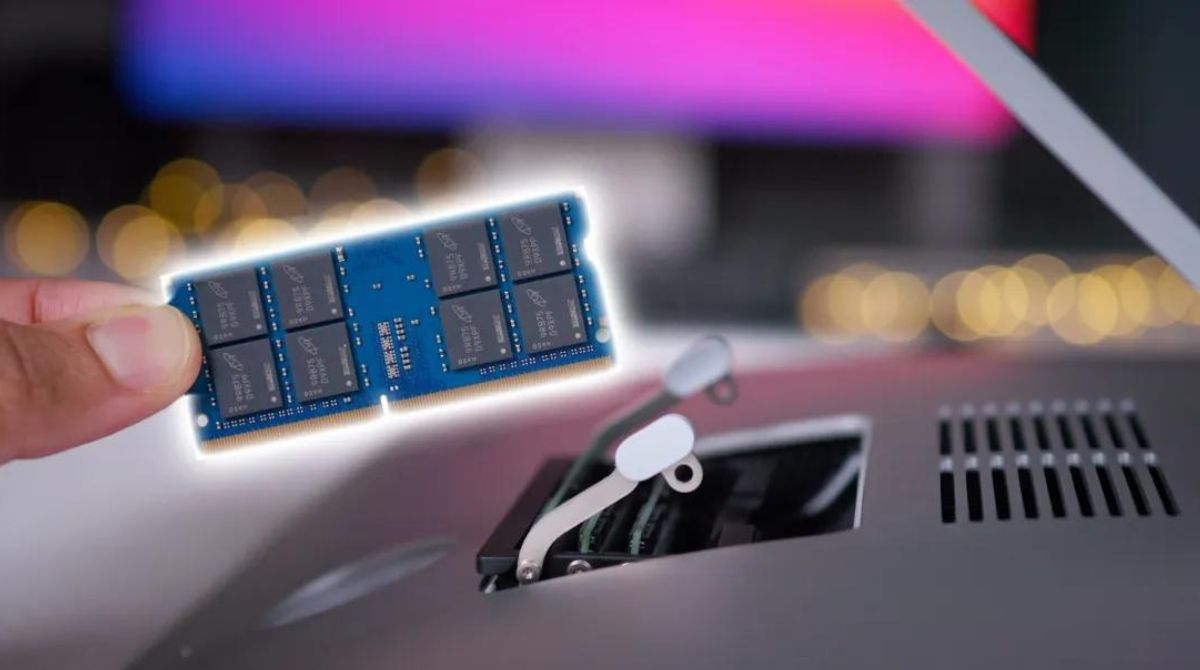What is RAM?
RAM stands for Random Access Memory, and it is an essential component of a computer’s hardware system. RAM is responsible for temporarily storing and accessing data that the computer’s processor needs to perform tasks and run programs. Think of RAM as your computer’s short-term memory, providing quick and easy access to information that is actively being used by the system.
Unlike permanent storage devices such as hard drives or SSDs, RAM is volatile, meaning that it loses its data when the computer is powered off or restarted. However, its volatility also gives it the advantage of high-speed retrieval, making it crucial for optimizing the performance and efficiency of your iMac.
When you open an application or launch a program on your iMac, it gets loaded into RAM, allowing the processor to quickly access the required data and execute tasks. The more RAM your iMac has, the more data it can store and retrieve at once, resulting in smoother multitasking, faster program launch times, and overall improved performance.
RAM capacity is measured in gigabytes (GB), and modern iMacs typically come with varying amounts of RAM preinstalled, depending on the model and configuration. While the standard amount of RAM may be sufficient for everyday tasks like browsing the internet or checking emails, more demanding tasks such as video editing, graphic design, or running intensive software may require additional RAM.
Upgrading your iMac’s RAM is a great way to boost its performance and ensure it can handle more resource-intensive tasks without experiencing slowdowns or performance bottlenecks. By increasing the RAM capacity, you provide your iMac with the ability to juggle multiple tasks simultaneously, process and store larger amounts of data, and reduce the reliance on virtual memory, which can significantly slow down the system.
In the following sections, we will explore the requirements for upgrading your iMac’s RAM, the steps involved in the upgrade process, recommended RAM options, as well as some useful tips and precautions to ensure a smooth and successful upgrade.
Why should you upgrade your iMac RAM?
Upgrading the RAM of your iMac can provide numerous benefits and significantly enhance your overall computing experience. Here are some compelling reasons why you should consider upgrading your iMac’s RAM:
- Improved Performance: One of the main reasons to upgrade your iMac RAM is to improve its overall performance. With more RAM, your iMac can handle resource-intensive tasks with ease. It allows you to run multiple applications simultaneously without experiencing lag or slowdowns.
- Increased Multitasking Capability: If you find yourself frequently switching between different applications or working on multiple projects simultaneously, upgrading your iMac’s RAM can greatly enhance your multitasking capabilities. It enables you to work faster and more efficiently, without your system feeling sluggish or unresponsive.
- Enhanced System Responsiveness: With more RAM, your iMac can store and access a larger amount of data in its memory. This leads to faster data retrieval, resulting in quicker program launch times and improved system responsiveness. You’ll notice smoother navigation and reduced waiting times when opening files and applications.
- Better Compatibility with Resource-Intensive Software: If you work with demanding software such as video editing or 3D rendering applications, upgrading your iMac RAM is crucial. These applications often require a significant amount of memory to operate efficiently. By increasing your RAM capacity, you ensure that your iMac can handle these resource-intensive tasks without performance bottlenecks.
- Future-Proofing: Technology is constantly evolving, and software requirements are becoming more demanding. By upgrading your iMac’s RAM, you future-proof your system and ensure it can keep up with the evolving software landscape. This allows you to get the most out of your iMac for years to come.
With these benefits in mind, upgrading your iMac RAM is a wise investment that can significantly enhance the performance and usability of your computer. In the following sections, we will guide you through the process of upgrading your iMac’s RAM, ensuring a seamless and successful upgrade experience.
Understanding the requirements of your iMac
Before proceeding with upgrading your iMac’s RAM, it is important to understand the requirements and limitations of your specific iMac model. Here are some key factors to consider:
- Compatibility: Not all iMac models have user-upgradable RAM. Some older iMac models have soldered RAM, meaning it is not possible to replace or upgrade the memory modules. Therefore, it is essential to check the compatibility and upgradability of your iMac before purchasing new RAM modules.
- Maximum Supported RAM: Each iMac model has a maximum supported RAM capacity. It is crucial to know the maximum RAM limit of your iMac in order to choose the right capacity when purchasing new RAM modules. Exceeding the maximum supported RAM may cause compatibility issues or lead to system instability.
- RAM Type and Speed: Different iMac models require specific RAM types and speeds. It is important to identify the correct RAM type and speed supported by your iMac to ensure optimal compatibility and performance. Refer to your iMac’s documentation or consult Apple’s official website for detailed information on the RAM specifications.
- OS Compatibility: While upgrading the RAM itself does not affect the compatibility with the operating system, it is worth considering whether your iMac’s hardware specifications meet the minimum requirements of the latest macOS versions. Some newer macOS versions may require a certain amount of RAM to function optimally.
To determine the specific requirements of your iMac, you can access the “About This Mac” section by clicking on the Apple menu in the top left corner of your screen and selecting “About This Mac.” This will provide detailed information about your iMac model, including the RAM type, speed, and the maximum supported capacity.
Additionally, it is a good idea to consult Apple’s official documentation or visit their support website for detailed information on RAM upgrades specific to your iMac model. There, you can find step-by-step guides, compatibility information, and any additional considerations that apply to your particular iMac.
By understanding the requirements and limitations of your iMac, you can ensure a smooth and successful RAM upgrade process. In the next section, we will cover the steps involved in upgrading your iMac’s RAM, guiding you through the entire process.
Steps to upgrade your iMac RAM
Upgrading the RAM of your iMac may seem like a daunting task, but with the right guidance and precautions, it can be a straightforward process. Here are the general steps involved in upgrading your iMac RAM:
- Gather the necessary tools: Before starting the upgrade process, ensure that you have the necessary tools on hand. You may need a screwdriver, an anti-static wristband, and a clean, static-free work surface to perform the upgrade safely.
- Back up your data: It is always good practice to back up your important data before making any hardware changes. While the RAM upgrade itself does not typically pose a risk to your data, it is better to be safe than sorry.
- Power off and disconnect your iMac: Shut down your iMac and disconnect all peripherals, including the power cable. Wait for the system to completely power off before proceeding.
- Locate the RAM access panel: Depending on your iMac model, the RAM access panel may be located on the back or bottom of your iMac. Consult your iMac’s documentation or Apple’s support website to identify the specific location of the RAM access panel for your model.
- Remove the RAM access panel: Carefully remove any screws or clips holding the RAM access panel in place. Set aside the cover in a safe place where it won’t get damaged.
- Ground yourself: To prevent static electricity from damaging the sensitive components of your iMac, wear an anti-static wristband or regularly touch a grounded metal object to discharge any static build-up from your body.
- Remove the existing RAM modules: Gently push aside the retention clips on the sides of the RAM modules to release them. Carefully remove the existing RAM modules from their slots by pulling them straight out.
- Install the new RAM modules: Align the new RAM modules correctly with the slots on your iMac. Apply an even, gentle pressure on both sides of the module until it clicks into place. Ensure that the tabs on the sides of the module are fully engaged.
- Replace the RAM access panel: Once the new RAM modules are securely installed, replace the RAM access panel by aligning it with the screw holes or slots and carefully fasten any screws or clips to secure it in place.
- Reconnect and power on your iMac: Reconnect any peripherals and the power cable to your iMac. Press the power button to turn on your iMac and verify that the new RAM modules are recognized and functioning properly.
Note that these steps are a general guideline, and the specific process may vary depending on your iMac model. It is crucial to consult the official documentation or support resources provided by Apple for detailed instructions tailored to your specific iMac model.
Congratulations! You have successfully upgraded your iMac’s RAM. In the next section, we will discuss some recommended RAM options to consider when upgrading your iMac.
Recommended RAM options for your iMac
When upgrading your iMac’s RAM, it is important to choose the right RAM modules that meet the requirements of your iMac model. Here are some recommended RAM options to consider:
- Capacity: The capacity of the RAM modules you choose is a crucial factor. It is recommended to select RAM modules with a higher capacity than what your iMac currently has to maximize the performance boost. For most users, upgrading to 16GB or 32GB of RAM is a good choice, but if you work with resource-intensive tasks or run multiple virtual machines, consider opting for 64GB or higher.
- Type and Speed: Take note of the specific RAM type and speed supported by your iMac. DDR4 is the most common RAM type used in modern iMacs, but there may be variations between different models. Ensure that the RAM modules you purchase are compatible with your iMac’s specifications. Additionally, consider opting for RAM with higher clock speeds for improved performance.
- Brand and Quality: Choose reputable brands known for their quality and reliability. Brands like Crucial, Kingston, Corsair, and G.Skill are well-regarded in the industry and offer a wide range of RAM options. It is recommended to invest in RAM modules with good reviews and a solid warranty to ensure longevity and compatibility.
- Consider Future Upgrade Potential: If budget allows, consider getting RAM modules with extra slots available for future upgrades. This allows you to expand the RAM capacity further down the line without having to replace the existing modules. It provides flexibility and future-proofs your iMac for potential increases in memory requirements.
It is worth noting that when upgrading your iMac’s RAM, it is generally advisable to install RAM modules in matching pairs. This ensures optimal performance and compatibility. However, if you have a specific reason or constraint, such as upgrading a single 8GB module to 16GB, consult your iMac’s documentation or Apple’s support resources to ensure compatibility.
When purchasing RAM modules, it is recommended to buy them from authorized retailers or directly from reputable manufacturers. This helps to ensure that you receive genuine, compatible RAM modules backed by warranty and technical support.
By choosing the right RAM modules that meet your iMac’s requirements, you can effectively boost its performance and experience a noticeable improvement in multitasking, program responsiveness, and overall system speed.
In the next section, we will provide some useful tips and precautions to consider when upgrading your iMac’s RAM.
Tips and precautions for upgrading iMac RAM
Upgrading your iMac’s RAM can provide a significant performance boost, but it’s important to follow some tips and take necessary precautions to ensure a smooth and successful upgrade process. Here are some tips to keep in mind:
- Consult official documentation: Before proceeding with the upgrade, refer to your iMac’s official documentation or Apple’s support resources. These provide specific guidelines and instructions tailored to your iMac model, ensuring a proper understanding of the upgrade process.
- Handle RAM modules carefully: RAM modules are sensitive to static electricity. Always handle them by their outer edges to avoid damaging the internal components. Avoid touching the gold connectors or exposing the RAM modules to excessive heat or physical damage.
- Ensure compatibility: Double-check that the RAM modules you purchase are compatible with your iMac model. Verify the required RAM type, speed, and capacity to ensure optimal performance and compatibility. Consider consulting with Apple’s support or authorized retailers if you have any doubts.
- Remove static electricity: Reduce the risk of damaging your iMac’s components by wearing an anti-static wristband or regularly touching a grounded metal object to discharge any static buildup from your body before handling the RAM modules.
- Follow proper installation steps: Carefully follow the installation steps outlined in your iMac’s documentation. Pay attention to the placement and alignment of the RAM modules, ensuring they are inserted correctly and securely. Do not force the modules into the slots.
- Perform a test boot: After upgrading the RAM, reconnect all peripherals and power on your iMac. Verify that the system recognizes the new RAM modules and runs smoothly. Run some intensive tasks or benchmark tests to ensure that the upgraded RAM is functioning as expected.
- Keep a record: Make a note of the new RAM configuration, including the model, capacity, and other relevant details. This information can be helpful for future reference or troubleshooting purposes.
- Back up your data: Although the RAM upgrade itself doesn’t directly impact your data, it’s always a good practice to back up your important files and data before making any hardware changes. This protects your data in case of any unforeseen issues during the upgrade process.
If you are unsure about performing the upgrade yourself or have concerns about accidentally damaging your iMac, it is recommended to seek professional assistance from an Apple Authorized Service Provider.
By following these tips and precautions, you can ensure a successful RAM upgrade for your iMac. Enjoy the improved performance and productivity that comes with the upgraded memory capacity!
Now that we have covered the necessary tips and precautions, let’s move on to addressing some common questions about iMac RAM upgrades in the next section.
Frequently Asked Questions about iMac RAM upgrades
Upgrading the RAM of your iMac is a common practice, but it can also raise some questions. Here are answers to some frequently asked questions about iMac RAM upgrades:
1. Can I upgrade the RAM on my iMac?
It depends on the specific model of your iMac. Some iMacs have user-upgradable RAM, while others have soldered RAM that cannot be upgraded. To determine if your iMac’s RAM is upgradable, consult the official documentation or Apple’s support resources for your particular model.
2. How much RAM do I need to upgrade my iMac?
The amount of RAM you need depends on your specific usage requirements. For general multitasking and everyday tasks, 8GB to 16GB of RAM is typically sufficient. However, if you work with resource-intensive applications like video editing or 3D rendering, or if you frequently run virtual machines, you may benefit from 32GB or more of RAM.
3. Can I mix different brands or types of RAM in my iMac?
While it is generally recommended to use matching RAM modules for optimal compatibility, mixing different brands or types of RAM can sometimes work. However, it may affect performance and stability, and compatibility issues may arise. It is best to use identical RAM modules from the same manufacturer to ensure proper functioning of your iMac.
4. Does upgrading my iMac RAM void the warranty?
No, upgrading the RAM of your iMac does not void the warranty, as long as the upgrade is performed properly and does not cause any damage to the iMac. However, it’s always a good idea to consult the warranty terms and conditions or contact Apple support for specific information regarding your iMac model.
5. Can I upgrade my iMac RAM myself?
Yes, you can upgrade your iMac’s RAM yourself if your particular model allows for user-upgradable RAM. However, if you are uncomfortable with performing the upgrade yourself or have concerns about accidentally causing damage, it is advisable to seek professional assistance from an Apple Authorized Service Provider.
6. Will upgrading my iMac’s RAM improve its performance?
Yes, upgrading your iMac’s RAM can significantly improve its performance. More RAM allows your iMac to handle multitasking, process data faster, and run resource-intensive tasks more smoothly. You may experience faster program launches, reduced lag, and improved overall system responsiveness.
7. Do I need to reinstall the operating system after upgrading my iMac RAM?
No, upgrading the RAM does not require you to reinstall the operating system. The operating system can automatically recognize and utilize the upgraded RAM capacity after the hardware change. However, it is always a good practice to keep your operating system up to date with the latest updates and patches for optimal performance.
Remember to consult your iMac’s official documentation or Apple’s support resources for more specific and detailed information regarding RAM upgrades for your particular iMac model.
With these frequently asked questions answered, you should now have a better understanding of iMac RAM upgrades. In the next section, we will wrap up this guide with some closing thoughts.







